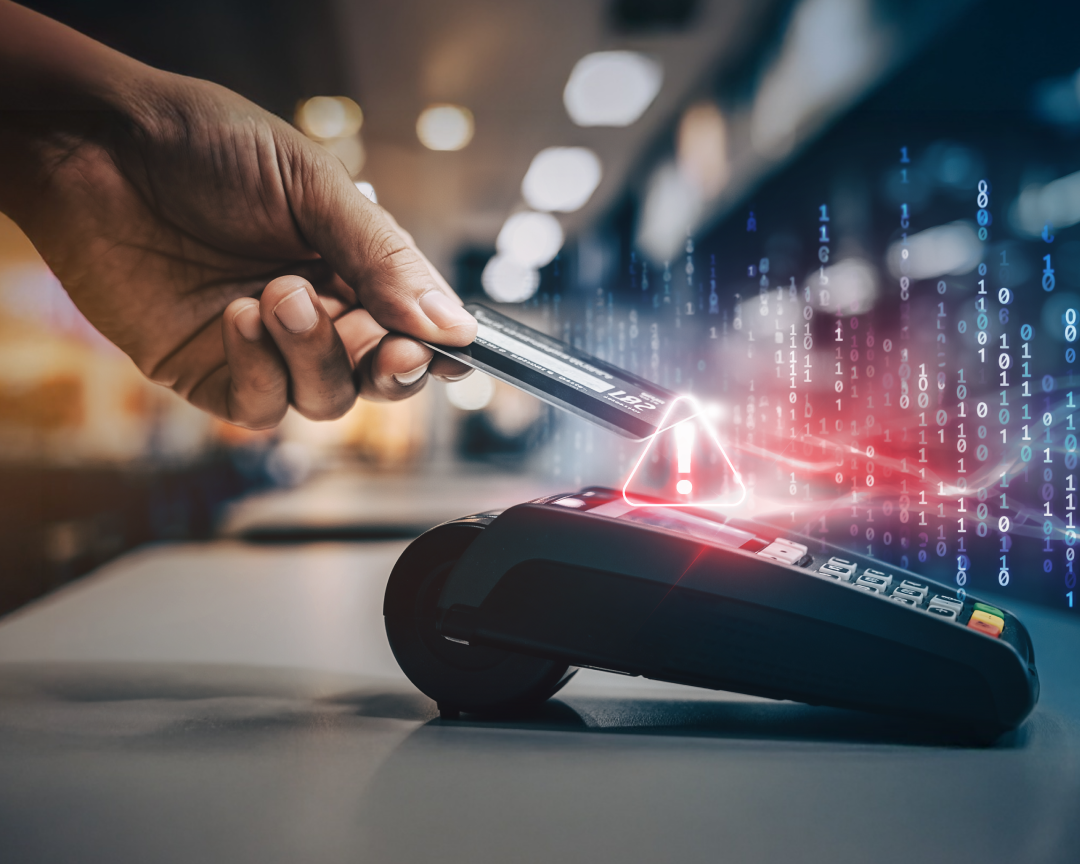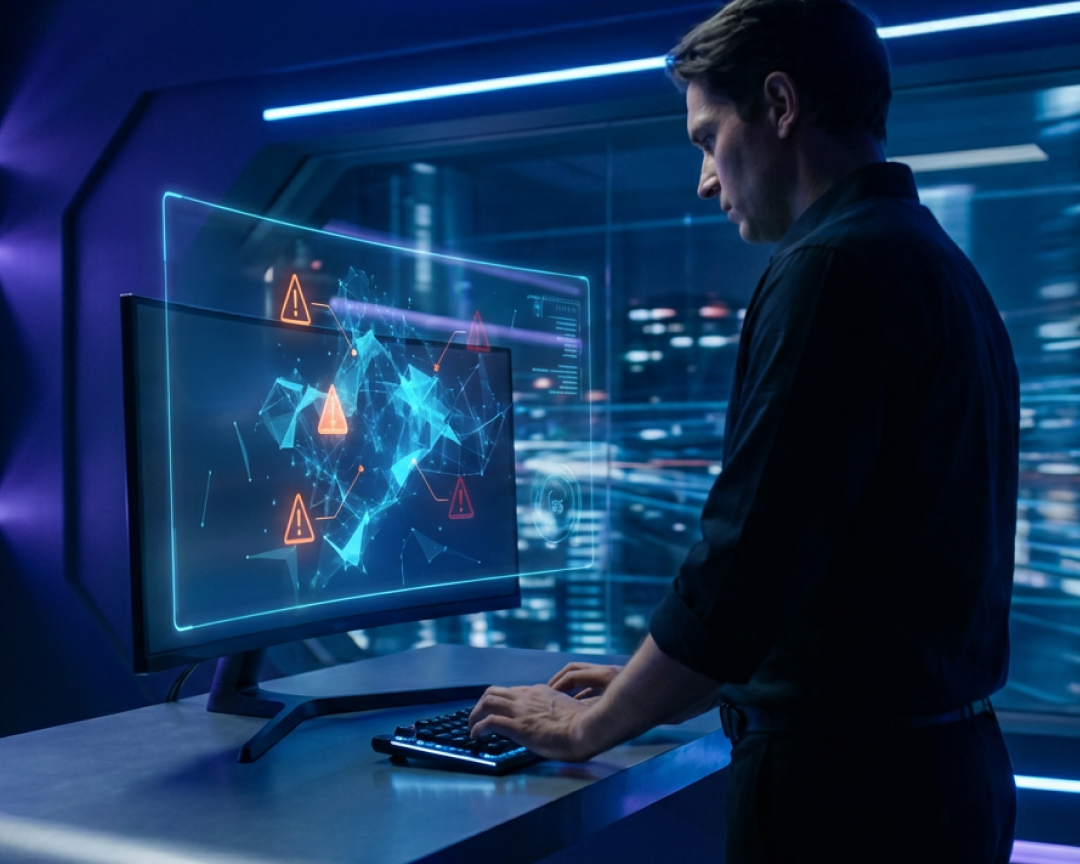.svg)
Today’s forward-thinking business owners are no longer keeping their cyber and physical security strategies siloed. Instead, they’re bringing the two together—slashing risks to security and efficiency in the process.
Physical security and cybersecurity have long been treated as separate concerns: gates, guards, and alarms on one side—firewalls, intrusion-detection systems, and antivirus software on the other.
There’s just one problem: It doesn’t make sense. Not when our digital and physical worlds are more connected than ever.
Today, remote access technology is fueling work, and the sheer number of connected smart devices—locks, thermostats, appliances—means that physical and cybersecurity must be integrated.
The goal for organizations is physical and cybersecurity convergence, where threats in both the physical world and the digital one are part of the same overall security strategy with the goal of keeping business uninterrupted.
The good news? Many organizations are moving in that direction. In 2023, 42% of organizations increased the number of cybersecurity-related tools they deployed in their physical security environments, up from just 29% in 2022.
Consider, for example, AI-enabled cameras, which are quickly becoming one of the most important tools businesses have in security convergence. That’s especially true for multi-location businesses like retail and restaurant chains, where a threat to one location can mean a threat to all.
These intelligent cameras are a major step up from simple video cameras, which are often only used to see what happened—a customer fall, for example—rather than what is happening or could happen. That’s a costly and reactive approach.
“We’ve had security cameras forever, but they were simple devices that just recorded,” says Tyler Owen, VikingCloud’s Senior Director of Product Management for Managed Security Services. “Now, with AI getting better and better, the cameras have gotten so much smarter, and they’re connected to the network, so they alert you to problems as they’re happening.”
Here are 4 ways that physical and cybersecurity convergence can help organizations better protect their people, property, and data, while also driving greater efficiency and revenue.
1. Slashing the Attack Surface
Menu kiosks, tablets for taking orders in the drive-thru lane, and public Wi-Fi networks—each present a physical security threat that could quickly turn into a digital one. And that’s not acceptable considering how many companies rely on internet connectivity and local networks to operate.
Today, more and more hackers are taking advantage of the physical world through rogue access points. A rogue access point is a wireless access point installed on a network without permission. It’s similar to someone hacking into a smart home appliance, but in this case, they could gain access to a business’s entire network.
To penetrate a rogue access point, the hacker must be within a certain physical distance of the network. For instance, they might be parked just outside a coffee shop—or even seated at a table inside.
A security-enabled wireless access point allows a business to detect the rogue access point to see if the hacker has gained access to the network and, if so, determine what they’re trying to do—such as stealing customers’ credit card numbers. That then triggers a camera to record the physical area where the rogue access point has been identified, and then AI is used to analyze the behavior of anyone nearby.
In effect, AI enables cyber and physical security to work hand in hand. “By combining the two security technologies, you can then do some cyber sleuthing and figure out who the hacker might be,” Owen says.
2. Connecting Tech and Data
Unlike yesterday’s video cameras or shopkeeper bells, today’s IoT (internet of things) aren’t standalone equipment, but rather a linked network of data-collection devices. They have eyes, ears, and even a common “brain.”
These technologies integrate with each other to enhance an organization’s overall security and safety. As an example, AI-equipped cameras can connect with the building’s IoT sensors, monitoring air quality, temperature, and noise, alerting businesses if:
- A fridge or freezer temperature climbs too high, helping prevent spoilage.
- Critical equipment such as an oven, grill, or HVAC system needs maintenance, which reduces the time and money lost to downtime.
- A trash can is full, which might seem like small stakes, but consider the benefits: less wasted employee time, cleaner stores, and better pest control.
Smart cameras in hospitals can also monitor patients and help prevent falls, a major cause of injuries and complications. By detecting when a patient moves toward the edge of the bed, these cameras can alert staff, enabling timely intervention to ensure patient safety.
These systems can also be integrated with alarms, badge-reader solutions, and smart door locks to detect unauthorized access and quickly shut down digital and physical access points. That’s key, considering cybercriminals exploit not just employees’ digital errors but also their real-world mistakes. If a cybercriminal finds and copies a worker’s lost badge and gains access to the building, an IoT sensor detects the open door while an AI camera takes video and pictures and instantly stores them in the cloud.
3. Detecting Anomalies
A good store manager, security guard, or IT employee knows certain things about a business—when employees arrive, what time deliveries typically happen, who has access to a device or network. But that human knowledge is especially powerful when combined with AI-equipped sensors or intrusion detection systems, both for buildings and networks.
As an example, by capturing what a typical day looks like at a business, smart cameras and IoT sensors can alert security teams when something out of the norm happens. Maybe that’s a window left open overnight or an unauthorized person accessing a database. In fact, AI can be trained to spot a range of problematic behaviors, from trespassing and violence to vandalism.
Such capabilities can bolster security and improve daily operations, allowing business owners to ask and answer questions such as:
- When do people typically come and go from a store and how?
- How many customers are waiting in line, and when?
- Who is accessing your network and when?
- Based on heat mapping, where in the store do customers spend the most time?
Armed with this knowledge, companies can respond promptly to operational and security problems and opportunities. Management can nimbly adjust as needed, for example, by hiring more workers for certain shifts or ensuring employees aren’t accessing equipment or data that is off-limits.
4. Shrinking Shrinkage
Shrinkage—the loss of inventory through theft or mistakes—now costs the retail industry more than $100 billion a year.
AI algorithms can analyze real-time video feeds and help mitigate loss by:
- Tracking food-prep employees to ensure they provide the right amount of ingredients on each order.
- Linking with cash-register transactions to identify clerks providing customers with discounts.
- Identifying and tracking specific theft-prone merchandise and alerting security teams to behavior that might signal a theft in progress.
“It’s using the same technologies that we've long employed with cybersecurity but in that physical space to detect theft,” Owen says.
Of course, it’s important to take measures to protect employees’ and customers’ privacy and ensure employees don’t feel as if Big Brother is always watching. This is especially true considering that 45% of employees who are monitored by tech at work say it negatively impacts their mental state.
However, there are areas where employees are fully onboard with the peace of mind that smart security can bring. As an example, almost half of employees say AI-powered monitoring would help improve their safety in the workplace.
Only the Beginning
From continuous monitoring, which allows security teams to focus on likely threats over false alarms, to predictive equipment maintenance that allow retail stores to monitor their freezers or HVAC systems, “we’re just scratching the surface of what we can do with advanced technology,” Owen says.
The prospects are both exciting and necessary as the overlap of physical and digital assets will continue to grow. In 2019, there were 8.6 billion global IoT connected devices. By 2030? That number is expected to soar to 29.4 billion.
Yet, while IoT devices can enhance cyber and physical security and operations, they also pose potential network vulnerabilities. Therefore, in businesses, as in homes, the entire network perimeter must remain secure.
Companies must also develop privacy, data protection, and anti-bias policies to help ensure that tools like AI cameras—especially capabilities like facial recognition—don’t result in privacy and regulatory concerns.
But by balancing those risks, companies can focus on the upsides of a modern security plan that combines physical security and cybersecurity: the ability to proactively monitor threats, discover both cyber threats and operational issues in real-time, and combine fast-evolving tech with human judgment.
Interested in making your company cyber secure? Contact us today for a free consultation.







.webp)

